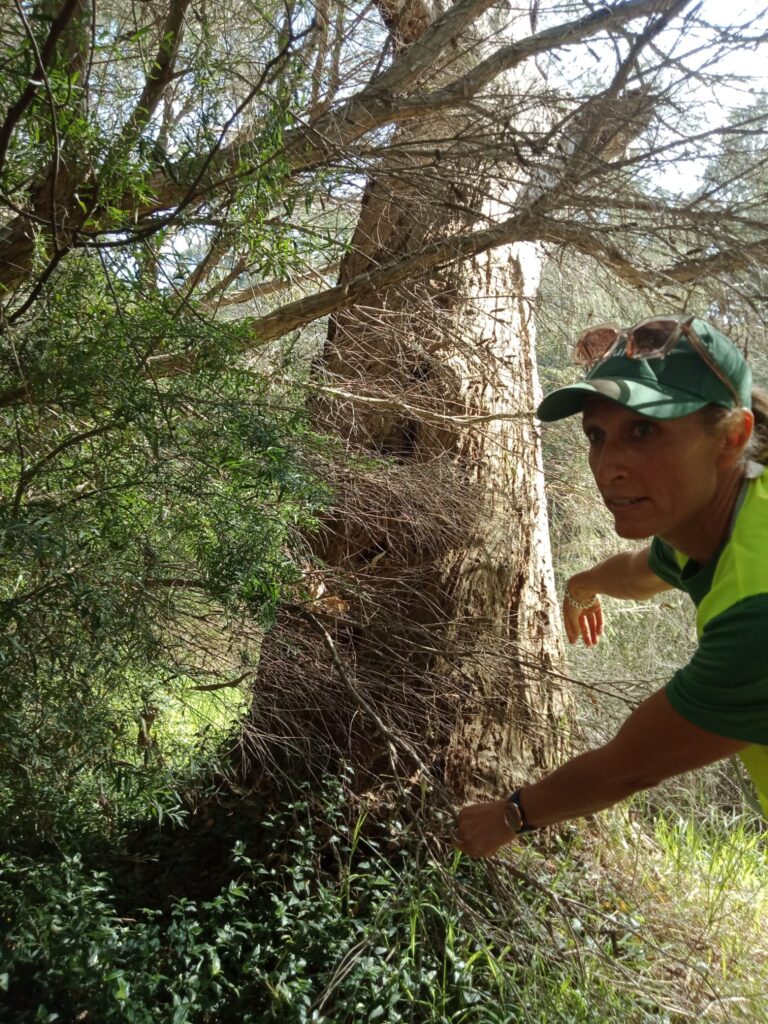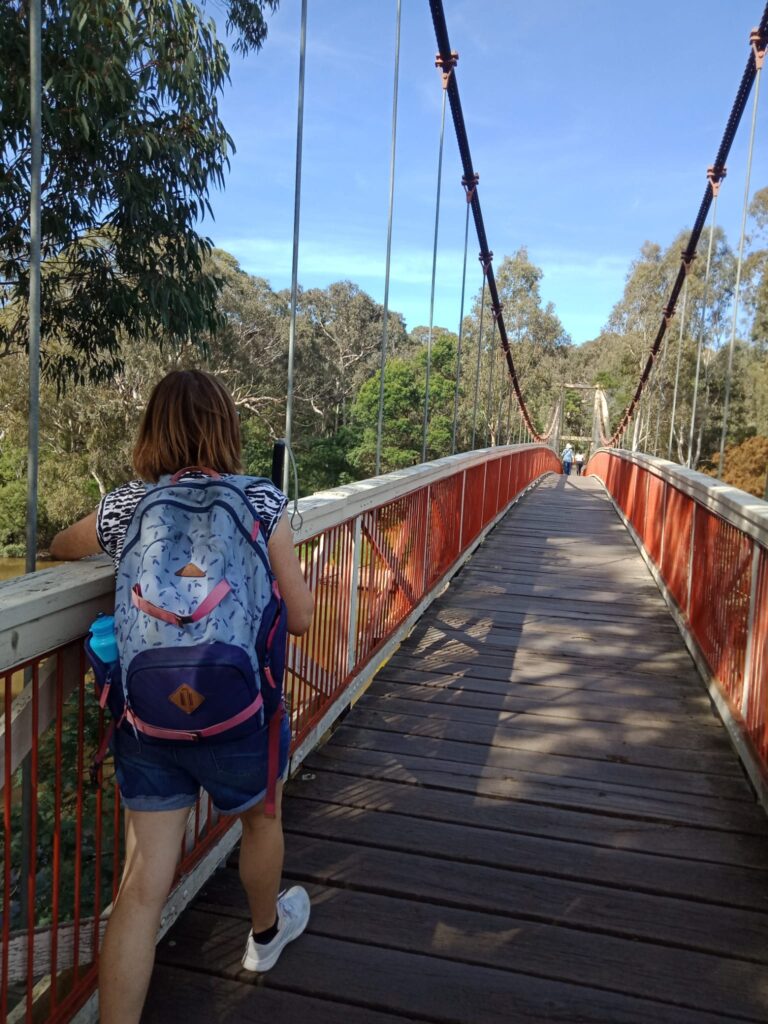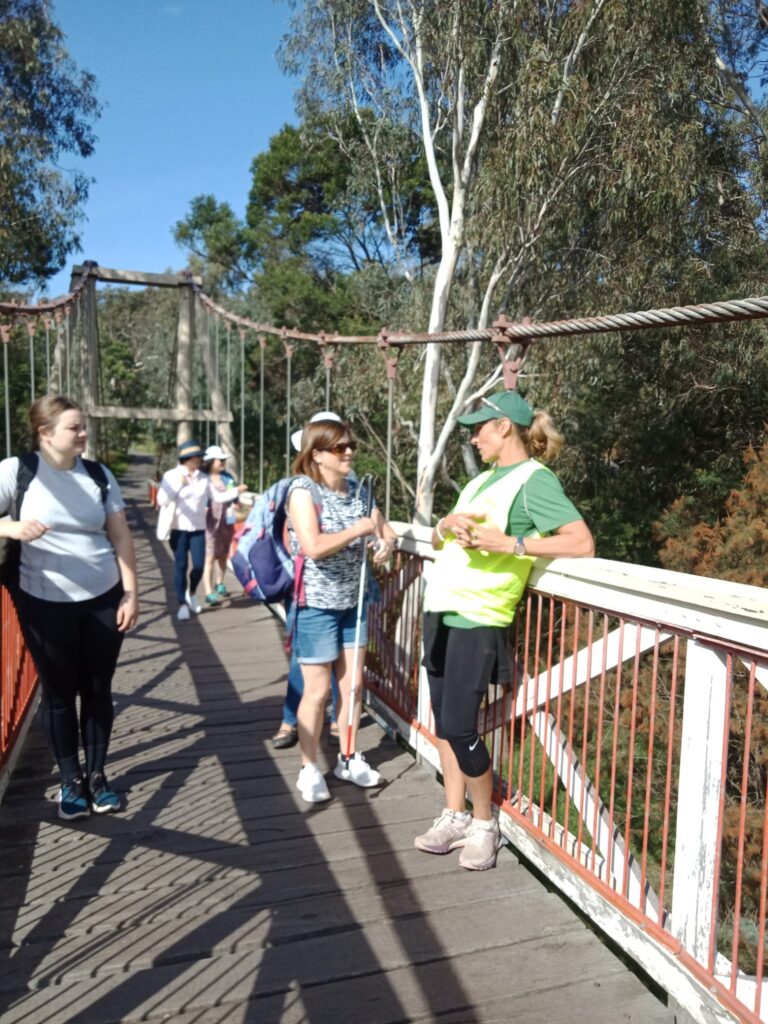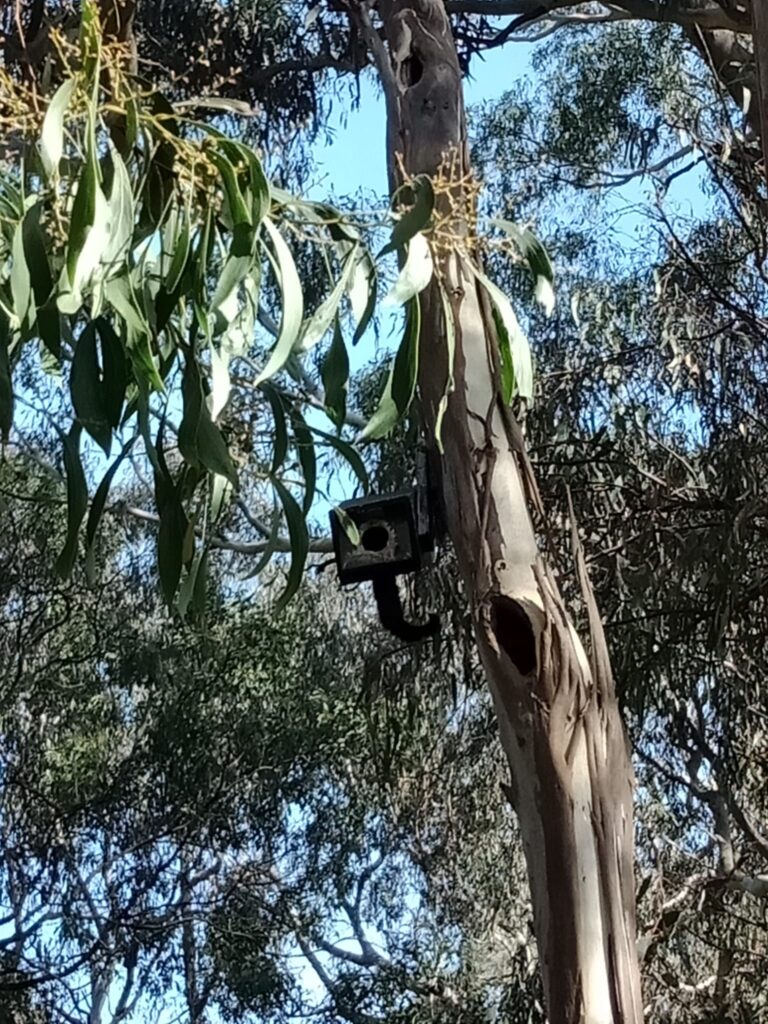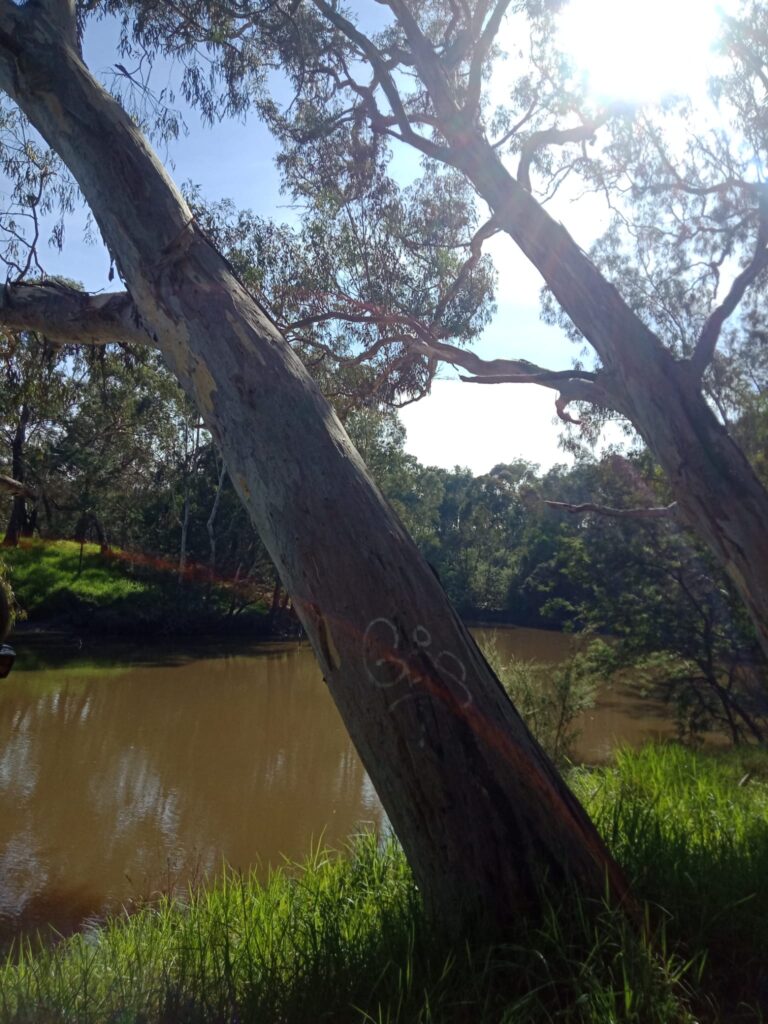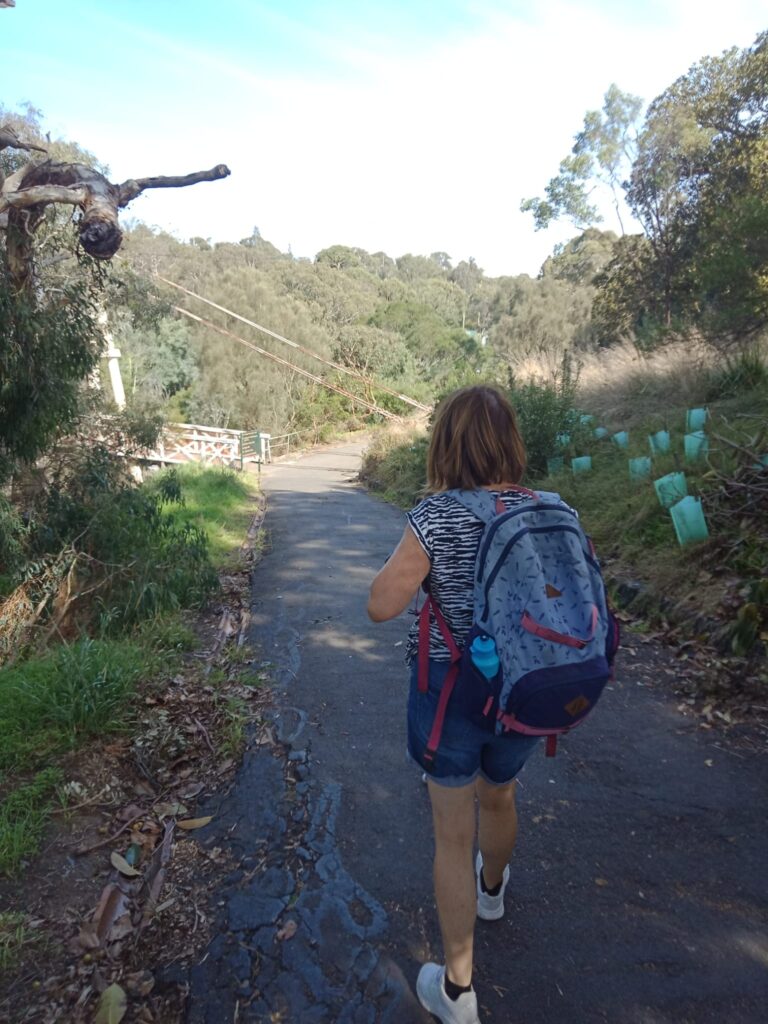On a beautiful day in late April, I seized the opportunity to explore Yarra Bend Park. This was another amazing park walk that was organised by Rachel from Blind Sports and Recreation (BSRV) and Parks Victoria. It’s hard to believe that Yarra Bend Park is situated only eight kilometres east of the Melbourne CBD. I’m talking here about a large city of over five million inhabitants. Yet tucked away amongst the hustle and bustle of the city is one of the largest and most significant natural bushland reserves left in inner Melbourne. The Yarra River flows for 12 km through the parklands and offers an important habitat for many species of birds, fish and wildlife.
Meeting the happy walkers
On arrival at Yarra Bend Park, a group of volunteers and employees from Parks Victoria, as well as members of BSRV and their support workers met at the visitor board located next to the Studley Boathouse Carpark. Joanna, my support friend and I were greeted by Rachel and the friendly volunteer guides. They provided us with all the information we needed for the walk which was slow paced and easy despite some small hills and the occasional dirt tracks. The volunteers also had an impressive amount of knowledge and enthusiasm about the location. Not only that, but they were also perceptive of the needs of visually impaired people and described the surrounding scenery, as well as any obstacles on the path.
Now for a lesson
During our visit to Yarra Bend Park, Lisa, a Parks Victoria volunteer, told us the park’s name was inspired by the sharp bend of the Yarra River that flows through the area. Makes sense. Boasting a vast array of flora and fauna, the park has become the home to over 200 different species including native animals such as possums, wallabies, echidnas and a variety of bird life.
Besides its natural treasures, Yarra Bend Park also has a rich cultural history. It was once a significant site for the Wurundjeri people, the traditional owners of the land where they would have lived peacefully following their traditions and speaking their languages for thousands of years. Tragically, after colonisation, the Wurundjeri people suffered dispossession, displacement and desecration which had a devastating effect on their health and wellbeing. White settlers and convicts took possession and built a lunatic asylum and a prison on the site followed by a rifle range and a golf course in later years.
A feast for the senses
One of the best things about these organised walks is that they are always a feast for the senses especially for members of the visually impaired community. The Yarra Bend walk didn’t disappoint with the warm, sunny weather combined with a gentle intermittent breeze that heightened the aroma from the eucalyptus trees. The sounds of the birds chirping and the feeling of the gentle breeze on the skin was so invigorating. In a little over one and a half hours we had completed the Dights Falls Trail and had covered a distance of close to 5 kilometres. This included several stops where the guides pointed out interesting and historical features of the landscape.
The Scar Tree
At one point along the path, we stopped at the Scar Tree which was particularly interesting. This is what Lisa, one of the guides, had to say about it.
“The Scar Tree has foot holes carved in its trunk which may have been used by Indigenous peoples to climb up the tree to source food for their children or to climb and jump into the river below. We’re not really sure, but it’s likely they also used the bark to make shields and trays for women to carry food on. This tree stands as reminder of life here before colonisation. The original owners of this land have long since passed down their knowledge and traditions to future generations”.
More on trees
Ken, another guide also impressed the group with his knowledge of trees. We paused several times during the walk while Ken pointed out the different trees in the area. He broke off a variety of small twigs and passed them around so that everyone could feel the foliage. Then he encouraged everyone to press the leaves between the fingers which releases a deeper aroma and increases the sensory experience.
Out of all the native trees, the Acacia has to be my favourite. It takes me back to my childhood in rural Tasmania, at a time when I could see better and only knew the Acacia as the Golden Wattle. In early spring, the Golden Wattles would be bursting with tiny, fluffy golden balls of flowers. The sweet, delicate aroma could be detected throughout the bush when the flowers were in full bloom. I have distinct memories of getting in trouble regularly for sneaking a bunch of Golden Wattle flowers into my bedroom. The smell of the flowers made everyone in the family sneeze, except for me. Acacia trees also have a distinctive foliage. Unlike other trees, their leaves are delicate and feathery, more like tiny ferns rather than the large, robust leaves found on many other native species.
Get amongst it!
Experiencing the Yarra Bend Park walk is a must for everyone whether you are visually impaired or not because it is a great way to become immersed in nature. There are a variety of easy walks with well-developed paths. For our particular group, the input from Parks Victoria and the volunteer guides was invaluable. They shared a lot of descriptive knowledge about the area that enabled us to visualise and understand our surroundings better. Despite being so close to the city centre, Yarra Bend Park provides a serene escape from city life. What could be better?
Thanks so much to Rachel (BSRV) for organising this walk. Also to Parks Victoria for their support and sharing their amazing knowledge. And thanks to Joanna for the beautiful photos.
We acknowledge the Wurundjeri People as the traditional custodians of Yarra Bend Park and we pay our respects to their Elders, past, present and future.
